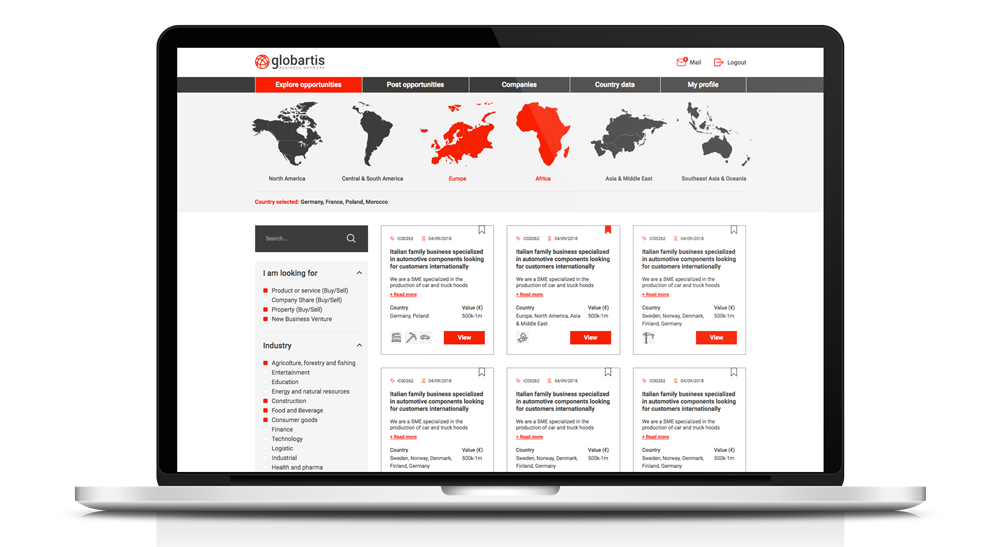100 years ago, Europe was the center of the world. With its advanced manufacturing base and its network of colonial territories, European countries controlled global trade.
Two world wars and the rise of three superpowers later (the United States, the Soviet Union, and now China) Europe is attempting to remain relevant in a world dominated by giant states, with large populations and big economies.
The answer so far has been greater regional integration, and, with all its flaws, it is working.
Even if it will be eventually overtaken by the newly signed RCEP (Regional Comprehensive Economic Partnership), the European Union (even after the departure of the United Kingdom) is the largest trading bloc on the planet, comprising 27 countries for a total of 448 million people, with a combined GDP of almost 16 trillion USD.
Its currency, the Euro, is the second most used reserve currency in the world after the US dollar.
The EU is extremely active as a bloc in international trade.
With regards to certain developing countries, which include Bangladesh, Lao PDR and Congo, the EU runs a special program, called Everything but Arms (EBA), whereby products imported from those countries in the union are not subject to any custom tariff.
Moreover, the EU has closed a number of free trade agreements (FTA) with several states and trading blocs, most recently with Canada, Japan and Mercosur, the South American customs union.
And yet, the EU continues to be a net exporter of goods rather than an end market for foreign products. Perhaps this is because some of its members are particularly export oriented, such as Germany and the Netherlands, but it is also due to the fact that doing business in Europe is not easy.
While the EU strives to make regulations similar, there are still 27 states with 24 official languages.
While a small continent geographically, Europe is a place with huge cultural differences. This has strong repercussions on business, for the same product could be flying off the shelves in Italy but not selling at all in Germany.
However, the technological revolution is changing the European business landscape, making companies more interconnected: many family-run SMEs have upgraded their business model, going online and hiring English-speaking employees in their sales and procurement departments.
If you know where to look, you can find plenty of opportunities for your business in Europe.
A good place where to start, especially today where trade fairs are being cancelled all over the world, are the Europe-based online B2B marketplaces.
The following are the four online platforms where you can find local European businesses and boost your presence in the continent.
1. Opportunity Network

Opportunity Network (also called ON) was originally founded in New York in 2014 by Italian and Spanish entrepreneurs, but quickly moved to Barcelona, Spain, when the founders closed their first important partnerships with banks in Italy and Spain.
In fact, ON is underpinned by a network of regional banks, some of them of considerable size, that vet the users that join the platform. Businesses cannot join ON as if they joined any other online service: in order to register, companies must be invited by one of the banks that partner with the marketplace.
As a result, this online platform boasts a portfolio of thousands of highly selected businesses.
While this selection process assures a high level of trust within the network, it has the drawback of limiting its potential as a global marketplace: most recently ON is also turning to small businesses, but up until now its minimum requirement for a single deal was as high as one million US dollars, which is usually beyond the means of most small businesses.
2. Enterprise Europe Network

Enterprise Europe Network (EEN) is an initiative of the European Commission, the executive arm of the European Union. As such, EEN covers all the countries in the EU, plus the UK, Switzerland, Russia, and some countries in East Asia like Japan, South Korea, and Singapore.
EEN was established in 2009, and so it is one of the oldest B2B marketplaces in Europe.
A nice advantage of this platform is that, due to its government ownership, it is completely free.
At the moment, there are more than 6,000 partnership opportunities on the platform, which makes EEN a well-established marketplace on the European market.
The only problem with EEN is that, while getting admitted immediately, companies cannot interact with each other directly but have to go through an intermediary: in EEN’s jargon, a partner.
Since this is usually a governmental agency or a not-for-profit organization, its first priority, as you may be thinking already, is not rushing to close your deal. You are left waiting while your connection is processed and you cannot deal directly with your counterparty.
3. UpinSales

This London-based marketplace boasts a network of 180,000 users mainly from European countries. UpinSales has followed a completely different approach: rather than establishing connections between companies, it works as a platform for companies looking for sales freelancers.
Companies can post opportunities requesting agents with certain characteristics, such as experience, network, etc, in target countries, for a certain product. If interested, the agent can contact the company through the platform’s connection process, as it happens with Globartis and ON.
Given its marketing and sales orientation, UpinSales is not a good tool for businesses looking to source products, but it could be of tremendous help to the small and medium enterprises looking to boost their sales in Europe.
4. Globartis

This new marketplace was founded in 2018 in Milan, Italy, by Italian entrepreneurs with experiences in international trade and technology. The difference with its older cousins is that Globartis is a 100% technology-driven platform.
There are no partners, banks, or governments involved in the registration process: users are required to provide accurate information about their identities and their businesses and are admitted based on the marketplace’s algorithm.
Moreover, the minimum deal on the platform is as little as 10,000 US dollars, therefore it is accessible also by micro businesses.
While being the youngest one has its advantages, like we said, such as being fully focused on technology, it also carries a temporary drawback, as the platform has the lowest amount of opportunities among the three (around 2,000). Moreover, whilst it strives to expand beyond its domestic market, it is still focused mainly on Europe.



